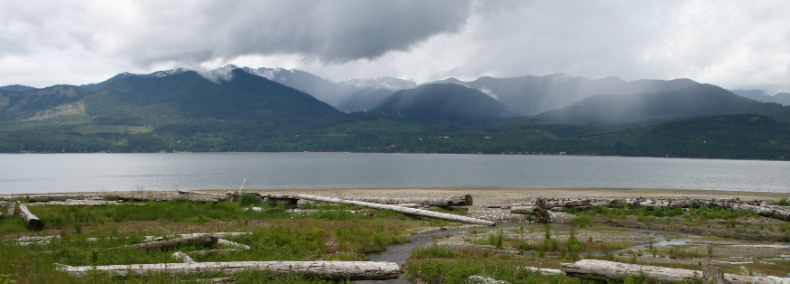Stavis Natural Resources Conservation Area

Stavis Natural Resources Conservation Area (NRCA) completely surrounds the existing Kitsap Forest Natural Area Preserve, which protects the best quality known example of the Douglas-fir–western hemlock/evergreen huckleberry forest community, and one of the only extensive mature and old growth forests in the Puget Sound lowlands. The combination of Stavis and Kitsap Forest protects a landscape that is similar in composition to the historic forest matrix of the Kitsap Peninsula. The site provides long-term protection for three forest plant associations prevalent to the Puget Trough Ecoregion: Douglas-fir–western hemlock/evergreen huckleberry forest, Douglas-fir–western hemlock/Pacific rhododendron forest and the Douglas-fir–western hemlock/swordfern forest. The site was also established to protect high-quality freshwater wetlands and an estuarine wetland and lagoon system.
Burned by wildfire 130 years ago, the forest community at Stavis naturally regenerated. Few forests this old remain on the Kitsap Peninsula due to logging and land conversion to development or other uses. As a result, mature forest communities in the NRCA are considered high priority for protection.
The NRCA includes the east and west forks of Stavis Creek, which come together to drain into Hood Canal, where the summer chum salmon run is federally listed as threatened. Stavis Creek is an important salmon recovery area, providing quality spawning ground for adults and important habitat for juveniles. The site also provides habitat for black-tailed deer, black bear and many other species.
Stavis NRCA is 3,020 acres.
Features protected: Douglas-fir–western hemlock/evergreen huckleberry forest community, Douglas-fir–western hemlock/Pacific rhododendron forest, Douglas-fir–western hemlock/swordfern forest, and high-quality riparian, freshwater wetlands and estuarine ecosystems.
Ecoregion: Puget Trough (Kitsap County)
Ecoregion: Puget Trough (Kitsap County)
Science, Research and Monitoring
Public and private universities, other research institutions or individual researchers may contact DNR to propose a research project at the site. If you are interested in pursuing research at Stavis NRCA, please contact David Wilderman, Natural Areas Ecologist, at david.wilderman@dnr.wa.gov
Environmental Education and Public Access
Currently there are no formal educational programs at Stavis. The site is not Americans with Disabilities (ADA) accessible and facilities are not available. A management plan for the site is under development and will continue to include valuable participation from the scientific, educational, low-impact recreational and local communities. For more information, contact the South Puget Sound Region Natural Areas Manager.
Volunteer and Stewardship Opportunities
If you are interested in volunteer and stewardship opportunities at Stavis NRCA, please contact the South Puget Sound Region Natural Areas Manager.
Restoration at Stavis NRCA
Pocket Estuary Restoration
In 2006, a 120 acre property along Hood Canal was purchased for Stavis NRCA. The property was homesteaded in the late 1800s, and had additional owners prior to DNR. At the time of purchase, the site included nine structures, a 750 foot bulkhead, and a channelized stream.
In an effort to restore the shoreline to natural ecosystem processes, the buildings were deconstructed and materials were recycled or salvaged for reuse in 2009. The stream was then ‘re-meandered’, and 240 pieces of large woody debris were installed and the bulkhead. About 11,000 cubic yards of fill were removed to recreate a pocket estuary. Roughly 4,500 native plants were planted the following winter and it will continue to be monitored and maintained by DNR crews.

